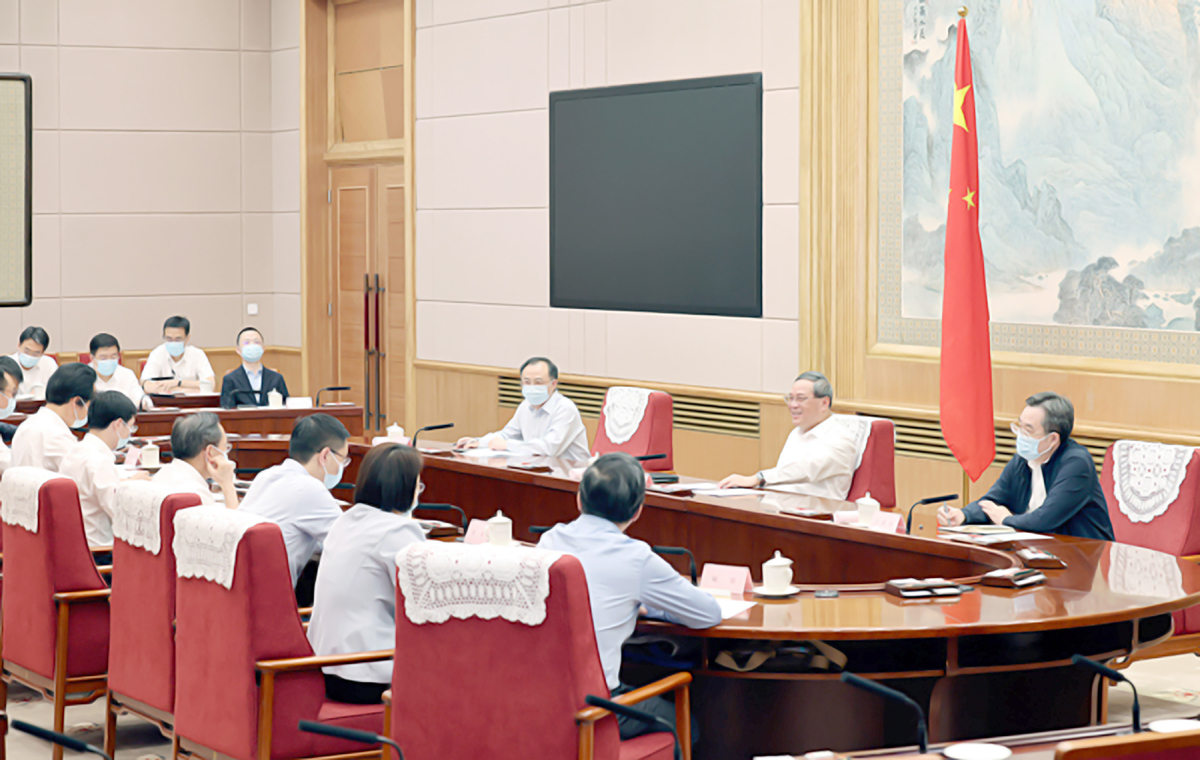RECENT ANALYSIS FROM LIU SHANGXI, LUO ZHIHENG, TIAN XUAN, AND HUANG XIANHAI
By Zichen Wang & Lixing Xie
Li Qiang, the Chinese premier and a member of the Standing Committee of the Political Bureau of the Communist Party of China Central Committee, presided over an expert symposium on the economic situation on Thursday, July 6. Ding Xuexiang, Vice Premier and also a member of the Standing Committee, attended the symposium. During the symposium, experts including Liu Shangxi, Luo Zhiheng, Tian Xuan, Huang Xianhai, Yuan Haixia, Qin Hailin, Lu Ming, and Zhao Wei spoke. The official readout didn’t elaborate on what they said at the meeting, but below are some of what they said recently about the Chinese economy before the meeting.
In an interview published by China Newsweek on July 6, Liu said that
It is a consensus among everyone that the recovery is below expectations. Initially, it was believed that the economy would quickly rebound after the change in the situation of epidemic prevention and control. However, it is now evident that the rebound has not been rapid. Based on some economic indicators, there have been signs of economic downturn starting from the second quarter of this year, which is April.
This indicates that risks may be spreading and expanding, and there is little disagreement regarding this assessment. Implementing an active fiscal policy and a prudent monetary policy is clear. However, the adequacy of their intensity and effectiveness is another issue. The adequacy of the intensity should be judged based on the results. If we only consider the intensity without looking at the effects, it may backfire. First, we need to assess the effectiveness of fiscal and monetary policies. Over the years, the marginal effectiveness of these policies has been diminishing, becoming weaker and weaker. The fundamental reason is that the transmission of fiscal and monetary policies relies on a sound institutional foundation. If this foundation is flawed, the transmission will be hindered, or in other words, an incomplete or unsound system will significantly reduce the effectiveness of policy transmission. Currently, the institutional foundation is not strong enough. For example, in the financial sector, the institutional foundation of monetary policy depends on the financial system, which requires the establishment of a modern banking system. This system has not been fully established, and the market-oriented structural reform in the financial sector has achieved some results but with limited impact. There has been progress in the reform of the fiscal system as well, but the reform of the central-local fiscal relationship has fallen short of expectations. Therefore, the current difficulties in local finances are closely related to the adjustment of the fiscal relationship between the central and local governments. Under the current system, the tight operation of local finances may contradict the requirements of an active fiscal policy to enhance intensity and effectiveness. Even if the national fiscal deficit is expanded and the scale of local government bonds is increased, policy signals may face obstacles in transmission. In addition, monetary transmission has encountered similar problems. On the one hand, there has been a substantial increase in the money supply, with money stock growing at double-digit rates, far exceeding the pace of economic growth. On the other hand, deposit growth has outpaced loan growth, indicating a phenomenon of “idle loans” at the macro level. Structural monetary policy relies on targeted liquidity injections, which fundamentally should be the responsibility of fiscal policy and require fiscal support to be effective. Currently, the effectiveness of the overall quantity-based monetary policy has been diminishing, making it difficult to effectively stimulate businesses and individuals. Business losses are increasing, and many companies are unwilling to take on additional loans. The same is true for individuals. Interest rate cuts have played a certain role, but for private enterprises, the cost of capital remains relatively high. Relying solely on interest rate cuts cannot solve the root problem. The key lies in how to enhance confidence in future scenarios and stimulate the willingness of businesses to borrow. It is essential to find ways to mobilize and inspire businesses to increase their loan appetite.Currently, there is actually a way to address the situation, mainly by relying on increased leverage at the central level. Moreover, there is room for the central government to increase leverage because the proportion of national debt to GDP is not high.
Currently, the scale of local government debt has exceeded that of the central government, and the effectiveness of relying on local macroeconomic control is declining while the risks are increasing. Therefore, it is necessary to realign and return decision-making and execution of macroeconomic control completely to the central government. From the current perspective, the regulatory policies of uncertainty need to be adjusted first. Clear negative signals need to be released, and long-term “reassurance pills” should be provided to private enterprises. The old “reassurance pills” may no longer be sufficient. In terms of property rights protection and fair competition review, specific measures need to be taken instead of vague statements. This is crucial for stabilizing expectations and boosting confidence.
It is important for the central government to increase leverage, with a focus on promoting the urbanization of migrant workers. Investment projects should be strategically planned around urban clusters and metropolitan areas.


